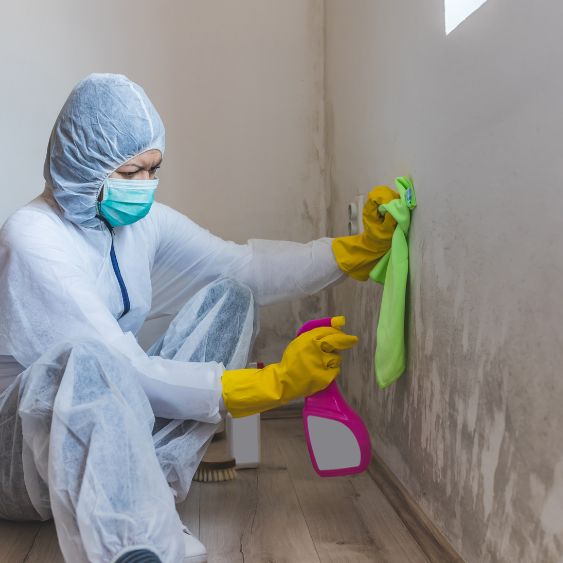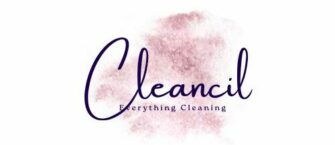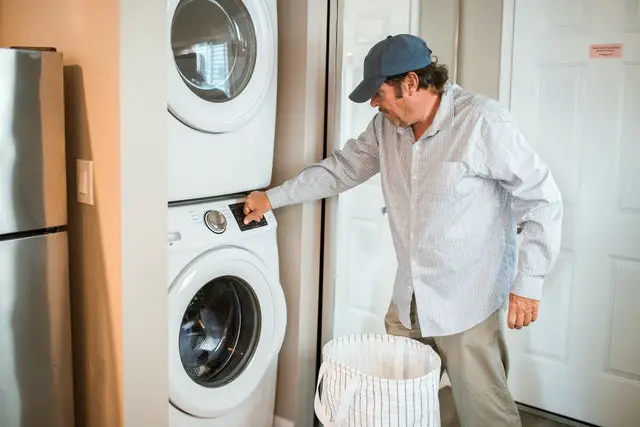If you noticed a strange and musty smell in your house and observed dark or even colored patches all around your property: from floors to the walls and ceilings, then there is a likelihood that you’re dealing with a mold problem.
Mold is a living organism that is classified under the fungus family and has the capacity to thrive in damp and humid regions, and its stay there can pose serious health threats to people and cause damage to their properties.
If you have mold growth, it’s only natural for you to want to seek an effective remedy for getting rid of them, and we’re here to tell you that the solution might be right there sitting in your pantry – white vinegar.
You heard that right. The white vinegar in your pantry isn’t only meant for the salads and pickles, you can actually use it to get a decent mold removal.
In this article, we’ll explore all there is to know about white vinegar as a mold cleaner: from how much of the pesky fungus it can remove, to how it works and how to use it effectively.

Brief: What is mold?
Mold is a fungus that likes a humid environment, wherever it happens to be from floors, carpets to walls, fabrics and windowsills.
It is able to grow in these places through its spores that are in constant motion, on the lookout for their host.
When they land on a surface that fulfills the requirements for their growth, they begin their activities and make their presence known.
There are many different colors of mold ranging from orange, brown, black to white and yellow, and these colors not only depend on the species of mold but also on the medium of growth as well as the environmental conditions.
Some species such as the Aspergillus and Penicillium can even grow in multi colors making it difficult to identify the type of mold presence without professional testing.
Many mold species are harmless but quite a number of them can pose serious health issues to people that are compromised.
Mold is best eradicated by tackling the root cause of it which is related to moisture accumulation, high humidity and condensation.
Eradication tactics targeted only at cleaning out mold without addressing the root cause of it will almost always turn out futile.
Brief: What is White Vinegar? And What Does It Contain?
White vinegar is a clear liquid obtained from the fermentation of diluted grain alcohol using acetic acid bacteria.
It is also known as distilled vinegar and has multi faced functionality. It can be used in cooking for example in pickling where its acidity serves as a preservative and flavor enhancer, as well as in cleaning due its gentility, antibacterial and antifungal properties.
White vinegar, during its fermentation, produces acetic acid bacteria which makes the medium acidic (with a pH of 2.5). It is this acidity that makes white vinegar a good option for disinfection and eliminating bacteria and fungus.
Depending on manufacturer and fermentation process, the percentage of acetic acid bacteria in white vinegar can vary from 4% to 7% which affects, to a little degree, its cleaning abilities.
Is white vinegar effective against mold?
Yes, white vinegar can kill some species of common household mold and this is thanks to its acetic acid content which has antifungal properties.
The way white vinegar tackles mold is quite fascinating. It attacks the structure of the mold and destroys it right from the root which makes it a really good natural mold remover, but for only contained and small mold infestations, and only for some mold species.
For larger infestations and the more resistant types of mold, you may need to employ the services of a mold remediation specialist where they will use more sophisticated methods to eliminate the growth.
White vinegar, being cheap to purchase at the stores and also free from abrasive constituents, makes it a safer choice than many commercial and household cleaners for removing mold.
How to use white vinegar to kill mold?
Because mold has the ability to trigger allergic reactions in certain individuals, it is best to protect yourself whenever you’re embarking on a mold removal venture.
So make sure you wear eye protection as well as nose and non-porous hand protection.

Also, ensure you’re working in a ventilated space by opening the windows and doors in the area.
After making sure you’re all covered, you can then begin your exercise with the following steps.
Ingredients and Materials:
- Spray Bottle
- Undiluted white vinegar (at least 4% concentration)
- Water
- Scrub Brush
- Clean cloth
Procedure to remove mold using white vinegar
Step 1: Transfer the vinegar into a spray bottle.
Step 2: Spray it directly onto the moldy surface and make sure to coat every single area of it. Allow the solution to soak into the mold for at least an hour to really get into the roots.
Step 3: Use a tough scrub brush to scrub the mold surface in order to loosen the mold and the stains it may have caused.
Step 4: Rinse the affected areas with water and wipe it dry with clean cloth.
How long does it take for white vinegar to kill mold?
Generally, it should take no more than 1 hour for white vinegar to begin working its magic on mold. After that duration, it must have penetrated deep into the roots to break down the mold structure, thereby making it easy to remove using a scrub brush.
If you’re dealing with a very severe mold growth however, it is recommended to leave the vinegar solution to sit for several hours or even overnight to allow enough time for the vinegar to penetrate the mold and aid removal.
What surfaces can you use white vinegar to treat mold on?
Vinegar is an acidic solution and because of that, it is not recommended to be used on just about any surface. It can cause damage to some.
Below are some of the surfaces that vinegar can be safely used on without any problems.
- Wallsty
- Ceiling
- Tiles (and the grout between them, ensure that it is a sealed one)
- Fabrics
- Carpets (make sure to test an inconspicuous area first)
- Wooden surface (make sure to test a small inconspicuous area first)
- Appliances like Dishwashers, Refrigerators and Washing Machines.
What surfaces should you avoid using white vinegar on for mold removal?
As much as possible, avoid using white vinegar to treat mold on the following surfaces as it can cause discoloration, etching, damage or even strip finishing.
- Natural Stone like granite, marble and limestone. (it can cause etching and dulling of the surface).
- Electronic devices: White vinegar can cause permanent damage to electronic components when it gets into them. So it is best to rely on other electronic safe treatments to tackle mold growth.
- Unsealed grout
- Aluminum
- Hardwood floors
What kills mold better vinegar or bleach?
Both bleach and vinegar are effective solutions for killing common mold you’ll mostly find in a home setting – with bleach taking the slight upper hand.
But it’s only fair that the question of which is actually best for tackling mold growth at home really should be answered by the question of which is more gentle to use on a wide variety of surfaces without causing any damage and which is also safer for the environment and our health.
It seems, based on research, that it’s white vinegar, because it is a natural and non-toxic option in addition to the fact that it is more affordable.
Bleach is a harsh chemical that happens to have an impressive disinfecting and cleaning properties. It can be detrimental for both the environment and humans when not disposed of and handled properly. It is also more likely to damage surfaces than white vinegar.
Other Alternatives For Tackling Mold At Home
White vinegar isn’t the only solution for tackling mold at home. There are other remedies as well which we discuss below.
Hydrogen peroxide
Just like white vinegar, hydrogen peroxide is a natural and non-toxic solution that is great for containing mold growth. It is a safer alternative to bleach because it works to kill mold in a similar fashion to bleach but without the toxicity.
To make a mold tackling solution with hydrogen peroxide, put it in a spray bottle and spray directly at the affected area. Let it sit for 20 minutes or until the hydrogen peroxide stops bubbling, then scrub and rinse the area with brush and water respectively.
Tea Tree Oil
This is also a natural option that is safe for humans and the environment. Tea tree oil is a natural antibacterial and antifungal solution which is why it is able to tackle mold growth.
To use tea tree oil for mold, mix a tablespoon of it with 1 cup of water and put it in a spray bottle and apply to the affected area. Allow to sit for 1 hour then scrub and rinse the area.
Baking Soda
Also a natural remedy, baking soda is great at killing mold as well as absorbing moisture from surfaces which would prevent mold growth. To use baking for mold treatment, mix ¼ of it with 1 cup of water, then add to a spray bottle. Spray, let sit for an hour and scrub.
Grapefruit seed extract
This is a liquid derived from the seed of grape fruits and it is very effective at killing mold. It is also a natural and safe solution so it does not pose any threat to the health or the environment.
To use grapefruit seed extract, mix 20 drops of it with 2 cups of water in a spray bottle. Spray to the affected area and let sit for 30 minutes, then begin scrubbing. Rinse and repeat until the mold is completely removed.
When to call in professionals?
Some mold problems are simply too big or stubborn to handle by yourself, and in that case it is advised to contact a professional that would be able to tackle the problem swiftly and safely for you.
Below are signs that will tell you when it is time to contact a professional for mold removal.

- When you have extensive mold growth: The professional would be able to assess the extent of the growth and determine the best way to deal with it safely and effectively.
- When you have mold in a hidden area or hard to reach area such as behind a wall or under floorboards.
- When you have previous unsuccessful attempts at mold removal at home.


